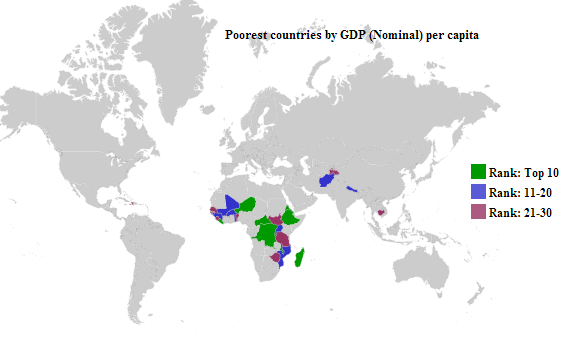WASHINGTON: A third of the poorest countries in the world are dealing with the double burden of high levels of obesity as well as under-nourishment, according to a study published in The Lancet journal. Researchers noted that a new approach to food systems is needed to help low- and middle-income countries reduce both obesity and undernutrition, two issues that have become increasingly connected.
“We are facing a new nutrition reality where major food system changes have led the poorest countries to have high levels of overweight and obesity along with undernutrition,” said Barry M. Popkin, a professor at the University of North Carolina in the US.
“Our research shows that overweight and obesity levels of at least 20 per cent among adults are found in all low-income countries. Furthermore, the double burden of high levels of both undernutrition and overweight occurs primarily in the lowest-income countries — a reality that is driven by the modern food system,” Popkin said.
This system, the researchers said, has a global reach and is preventing low- and even moderate-income countries and households from consuming safe, affordable and healthy diets in a sustainable way. Globally, estimates suggest that almost 2.3 billion children and adults are overweight, and more than 150 million children are stunted, the researchers said.
In low- and middle-income countries, however, these emerging issues overlap in individuals, families and communities, they said. The first of the four research papers explores the trends behind this intersection, known as the double burden of malnutrition. Popkin and his co-authors used survey data from low- and middle-income countries in the 1990s and 2010s to estimate which countries faced a double burden of malnutrition.
This means that, in the population, more than 15 per cent of people had wasting, more than 30 per cent were stunted, more than 20 per cent of women had thinness and over 20 per cent of people were overweight, the researchers said. Results showed that more than a third of low- and middle-income countries had overlapping forms of malnutrition, 45 of 123 countries in the 1990s and 48 of 126 countries in the 2010s, they said.
The problem was particularly common in sub-Saharan Africa, south Asia, and east Asia and the Pacific, where 29, seven and nine countries were affected, respectively, the researchers said. In the 2010s, 14 countries with some of the lowest incomes in the world had newly developed a double burden of malnutrition compared with the 1990s, they said. However, the team found that fewer low- and middle-income countries with the highest incomes, relative to others in that category, were affected.
The researchers said this reflects the increasing prevalence of people being overweight in the poorest countries, even as segments of the population still face stunting, wasting and thinness.
“Emerging malnutrition issues are a stark indicator of the people who are not protected from the factors that drive poor diets,” Popkin said. “The poorest low- and middle-income countries are seeing a rapid transformation in the way people eat, drink and move at work, home, in transport and in leisure,” he said.
“The new nutrition reality is driven by changes to the food system, which have increased the global availability of ultra-processed foods that are linked to weight gain while also adversely affecting infant and preschooler diets.
“These changes include disappearing fresh food markets, increasing numbers of supermarkets, and the control of the food chain by supermarkets and global food, catering and agriculture companies in many countries,” he said.
The other three papers in The Lancet series build on Popkin and his team’s work, exploring the physiological impacts of the double burden of malnutrition and recommending “double-duty” interventions that simultaneously reduce the risk of nutritional deficiencies while preventing obesity and related diseases. PTI







